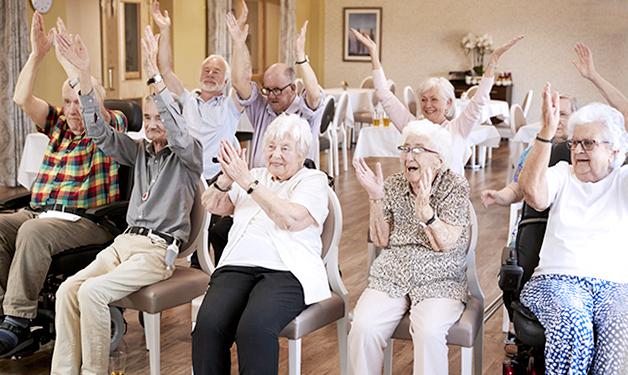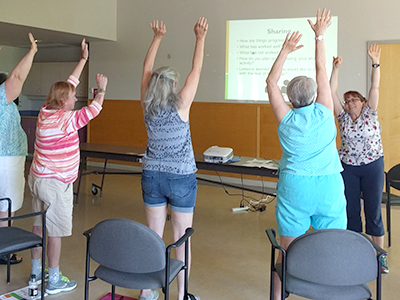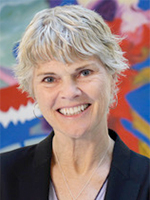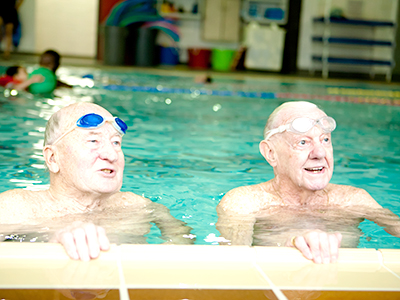
Research to reality—implementing study results in the real world.
For Vancouver Coastal Health Research Institute scientist Heather McKay, it is all about scalability. McKay studies ways to improve senior’s health, mobility and social connectedness through physical activity. But it is one thing to study a small group in a controlled setting; it is quite another to scale-up those results more broadly in the real world. McKay says scalability is a crucial factor in successful research, especially when it comes to changing unhealthy behaviors into healthier ones at the population level.
“There is no sense just doing small scale research in isolation—we have to spend just as much time looking at how to implement results in the real world, with more participants, in different settings. Very few studies do this!” McKay says more than two thirds of evidence-based intervention studies never scale up.
“We may be wasting valuable research money if we don’t understand how to scale up, if we don’t plan for real-world implementation of our study designs.”
McKay strives to practice what she preaches. In an earlier landmark Men On The Move study, McKay and her team found innovative ways to get older men—only 11 per cent of whom meet daily physical activity requirements—to be more active. McKay’s Active Aging Research Team then took these findings and used them to inform implementation of a larger health promotion intervention called Choose to Move.

Choose To Move is now being implemented in more than 55 communities across BC with 324 programs and more than 3,000 participants. At every step of the way, the team is working with the local community to identify and remove barriers to implementing the program in very different settings than the early phase, mostly urban study. They are partnering with BC Recreation and Parks Association (BCPRA), YMCA of the Lower Mainland and many other community organizations to better understand and adapt Choose to Move to the local context.
“The key to scale-up is collaborative partnerships. We can’t just arrive in a community as researchers and say, ‘Here’s my program, you implement it’, says McKay. "We have to create authentic partnerships and help groups on the ground to overcome barriers to delivery.”
McKay’s team were co-organizers of a symposium for over 200 senior-serving community groups around BC. Next steps are to integrate Choose to Move into local initiatives that are already underway. For example, if there was a successful book club in a small town, they would add a walking component—like gathering to walk together to book club, or taking a walking break part-way through a meeting.

McKay says the realities of life in rural and remote areas means adapting Choose to Move to what a community has capacity to deliver. “Our Men on the Move study had public transit as a key component, but that wouldn’t work in a remote area. Choose to Move includes community centre programs as one option. But in a small town, there may not be a community centre, so many choices aren’t available.” In smaller towns, McKay says the program leader might not be a health and fitness expert or the meeting place might be in a local church. But the program can still be effective.
“Adapting to local realities doesn’t mean abandoning what works. We kept the components that were key to success with Men on the Move.” The most important? The social aspect. Choose to Move always offers options for group meetings and shared activities.
No matter where the team goes, it’s always a challenge getting men involved. So far men only make up 20 per cent of the Choose to Move participants. The team is now focusing on outreach with organizations like the Royal Canadian Legion, the Men’s Shed and Movember groups.

Bottom line a top consideration
McKay says another major factor for successful widespread health interventions is cost.
“You have to be pragmatic. If you want government to fund a large-scale program, you have to make it affordable.”
In this case, McKay and her team worked to cut the costs for Choose to Move, while still keeping core components. “Our biggest cost was labour—activity coaches who do follow-up phone calls and one-on-one sessions are key to success for Choose to Move. So, we kept group meetings, but coaches make fewer follow-up calls. We continually evaluate to see if the intervention works, even without ‘cadillac version’ elements. So far, we are meeting the goals of increased mobility, activity and social connections.”
McKay says long-term payoffs would make it worthwhile. For example, 3,000 hip fractures occur in BC every year, each one costing about $30,000. Falls also impose a significant social and economic burden for older adults, their caregivers and the health care system. In 2018 the direct cost of fall-related injuries among those over 65 in BC was $558M. It is well known that more physically active seniors are at decreased risk for these and many other health problems.
Choose to Move will add an additional 400 programs in 2019 and 2020, scaling up in partnership with BCRPA, YMCA as well as scaling out to more rural, remote and marginalized senior groups smaller in partnership with many community organizations.


